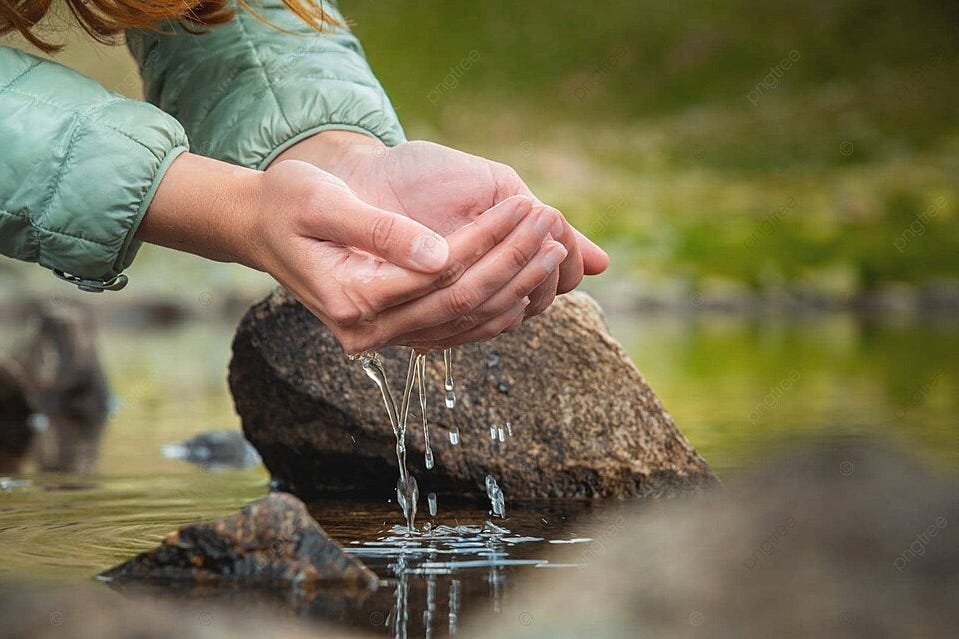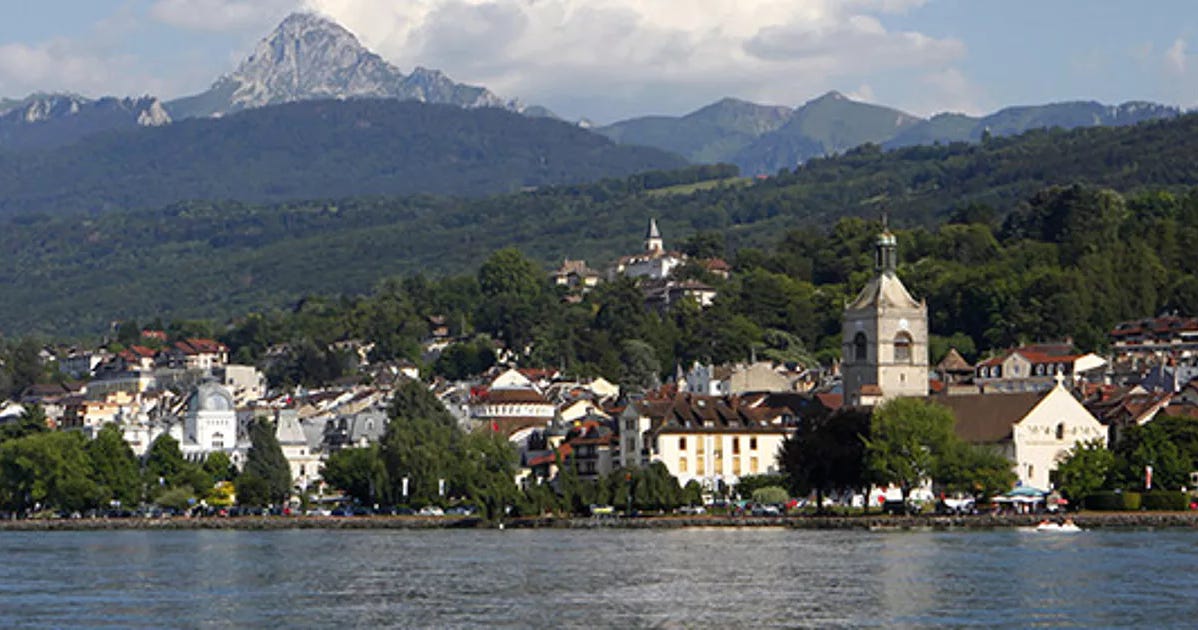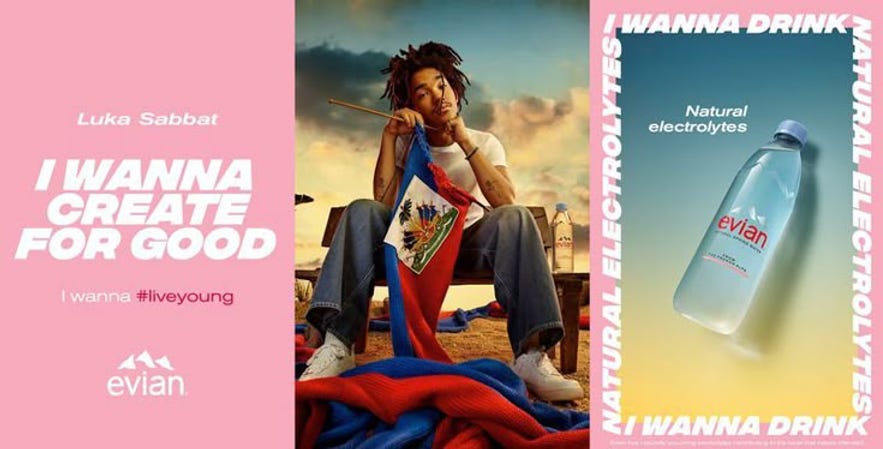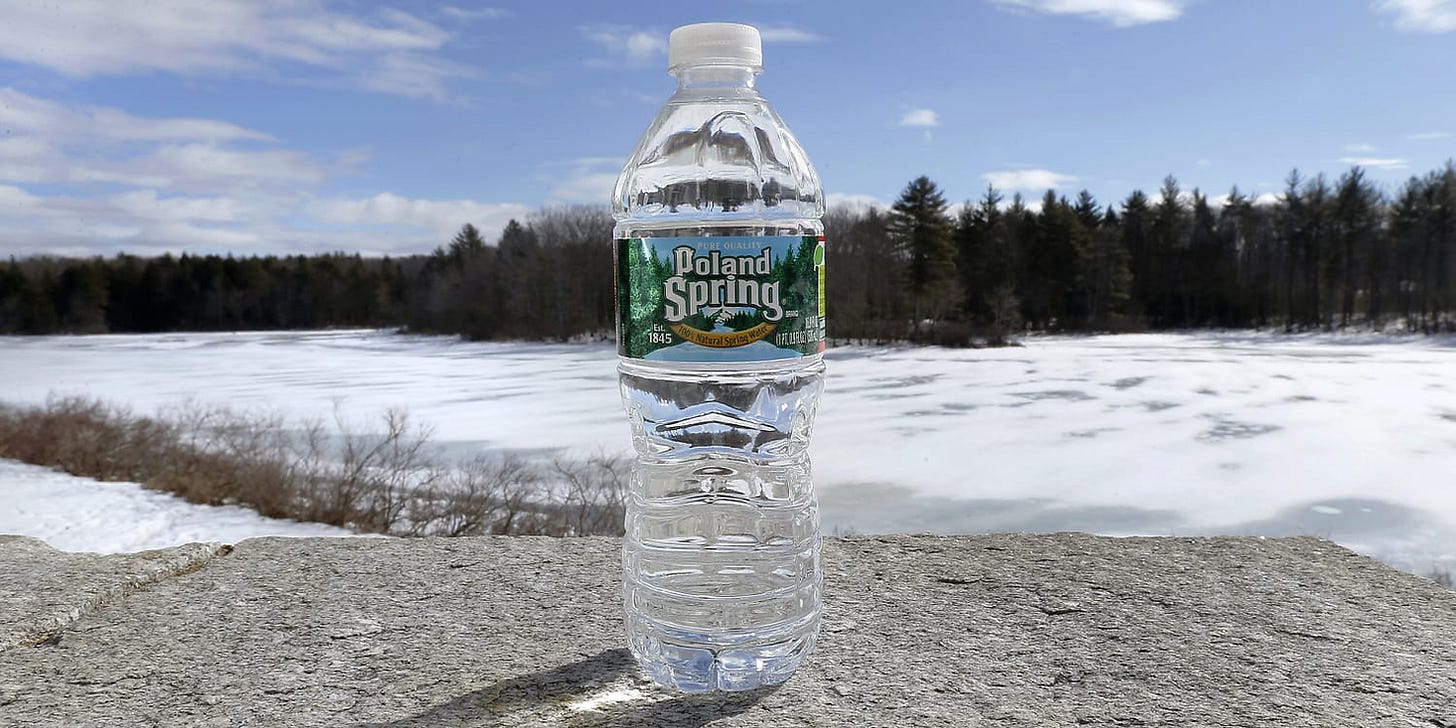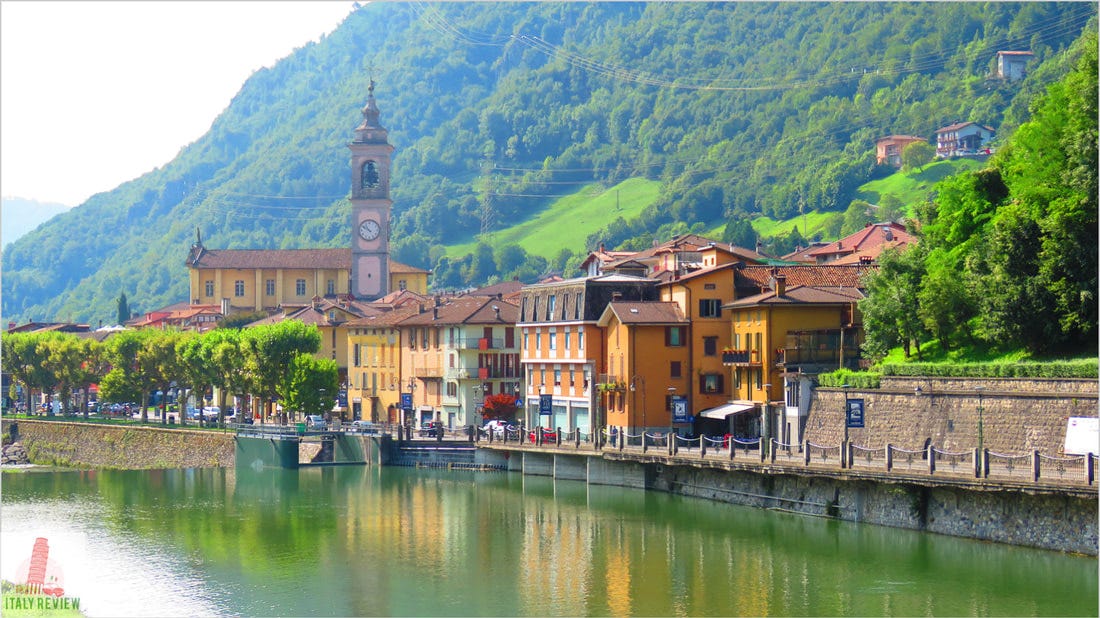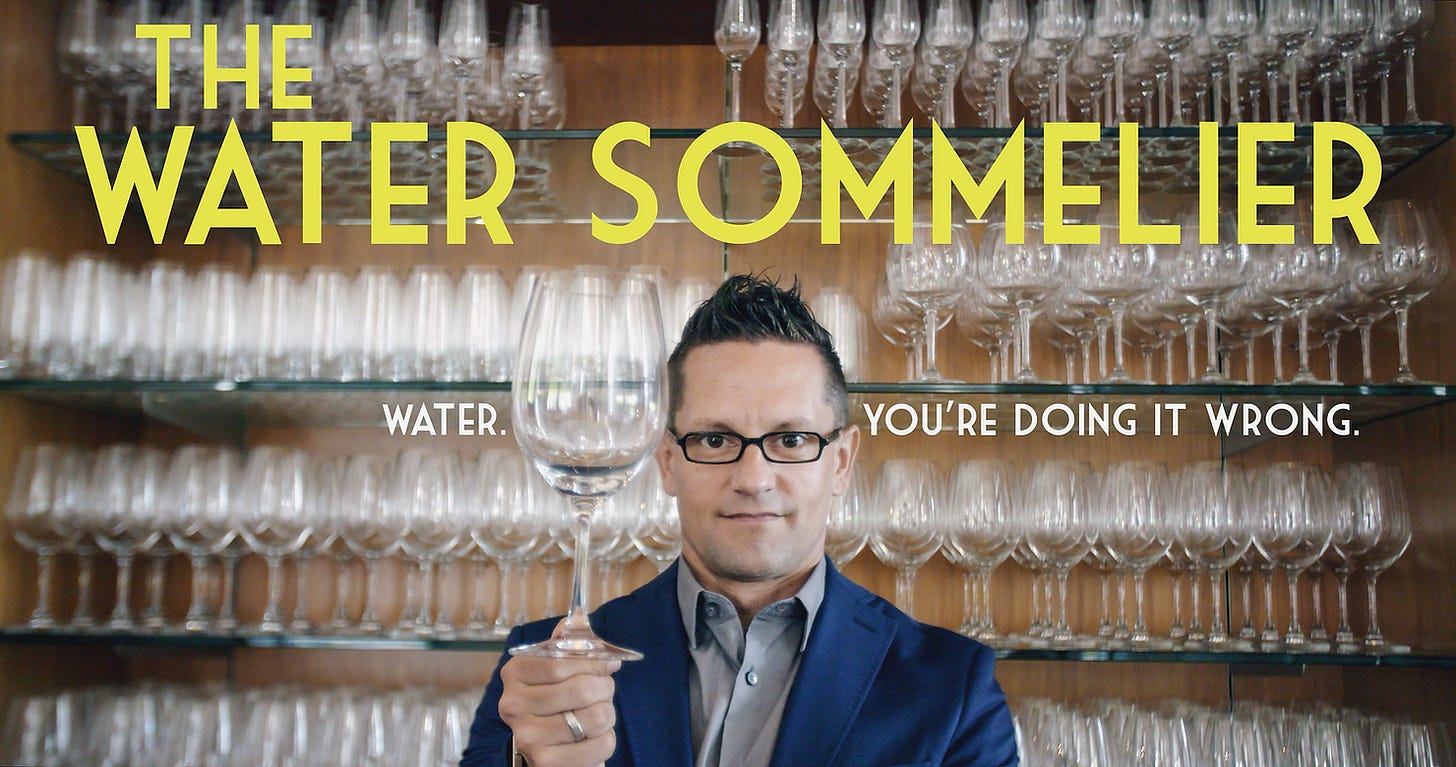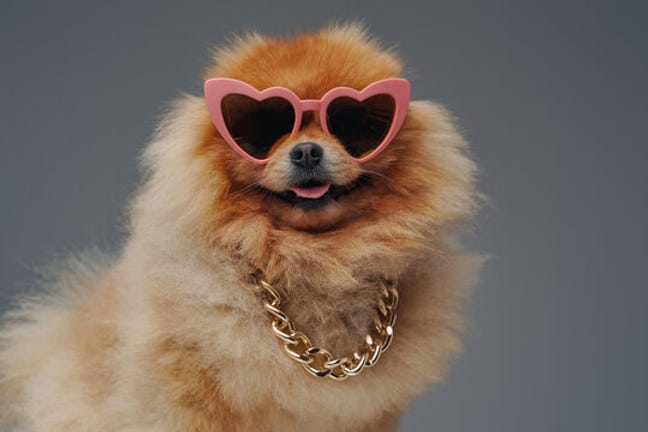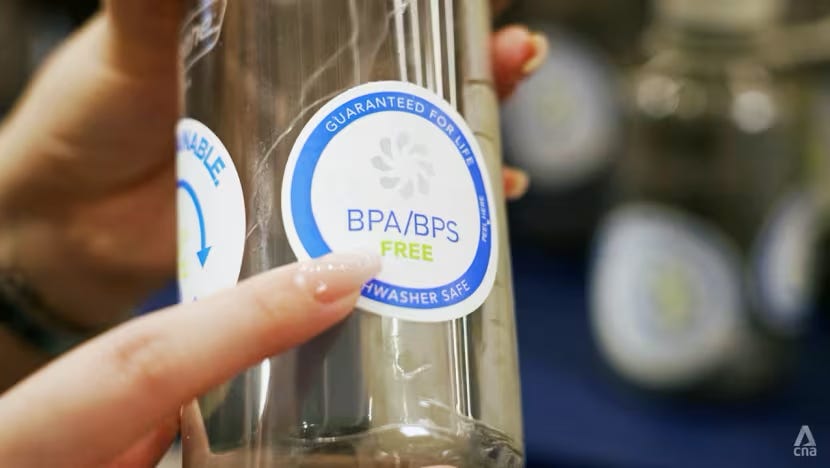Water Everywhere
Water Everywhere explores the bottled absurdity of hydration - where tap is taboo, sparkle is social, and $100K water is just good branding. How bottled water became a lifestyle and status symbol.
There was a time, not too long ago, when thirst wasn’t an accessory – it was just something you dealt with. We used to gather water in buckets. It came from wells, springs, rivers - sometimes questionably brown ones - and we drank it, unfiltered and unbranded, and yet, somehow, we continued existing. No one asked if it was glacier-fed or electrolyte-enhanced. Water was just water: wet, tasting faintly of pennies or regret if the pipes were old, and never something you paid for unless a man with a donkey hauled it uphill for you. No one filed lawsuits or wrote Yelp reviews. Survival, you see, didn’t come in a 16.9-ounce plastic bottle with a mountain range printed on the label.
Civilizations rose and fell on water. They engineered aqueducts, dug wells, and made cryptic rain dances - all in pursuit of the clear, free stuff. Wars were fought over access to it, sure, but no one charged two dollars a sip. Kings didn’t offer sparkling glacial runoff imported from Norway to their guests - at best, you got tepid river water and a whole lot of homemade beer. We were, at least in this regard, collectively sane.
Then came progress. Sanitation improved. Faucets grew stylish. Yes, water was everywhere. It began to arrive filtered, chlorinated, and pressurized directly into your home - one of the few things modernity got right.
It was boring, consistent, and gloriously abundant. And that, apparently, was the problem. Because once something becomes too accessible, we start finding new ways to complicate it. Enter branding. Enter lifestyle. Enter bottles designed to look like skincare products. Water became less about quenching thirst and more about curating an identity that says, “I hydrate, but thoughtfully.”
Which brings us, inevitably, to bottled water - perhaps the most successful con ever pulled off in broad daylight. Its branding was a triumph of marketing over common sense, and a liquid asset in more ways than one. In the grand timeline of human invention, paying for bottled water ranks somewhere between renting friends and subscribing to air. It needed no disguise, no deception - just a gentle, plastic-sheathed suggestion that what was once free should now cost $2.29. Plus tax.
It began, fittingly, not on some misty mountaintop or in a glacial cavern but in Pakistan, in 1998, when Nestle decided to bottle reassurance and call it hydration. There was no great spring discovered, no mystic monk blessing a fountain - just a corporation with a filtration system, a logo, and an uncanny ability to turn the mundane into the marketable. From there, Nestle Pure Life spread like polite propaganda, quietly absorbing regional wells, relabeling local springs, and arriving in grocery aisles with the quiet confidence of something that assumes it’s always been there.
By the mid-2000s, pumping out billions of liters a year, Pure Life was less a beverage than a belief system. The branding leaned hard into familial wholesomeness - smiling children, clean blue labels, and the word “pure” doing a lot of unverified heavy lifting.
It was the water equivalent of a friendly neighbor who doesn’t recycle properly but insists she does. In Asia, they courted Gen Z with augmented-reality bottle games and Instagram-ready influencer tie-ins. In the West, they played the eco card - lighter bottles, less plastic, more vague gestures toward sustainability. Tap water, after all, was for people who hadn’t seen the branding.
And then, quietly, Nestle sold the whole operation to BlueTriton in 2021, stripping its name from the label but not from memory.
The water remained the same - still filtered, still harmless, still inexplicably $1.29 a bottle, racking up roughly usd$9.3 billion in brand value globally. It continues to appeal to families who want to believe they’re making the healthier choice, to travelers who forgot their reusable bottle, to anyone lulled into thinking the words “pure” and “life” mean more when printed on plastic. It is, in many ways, the perfect product: everywhere, inoffensive, and maybe just slightly better than what you already had for free.
Dasani
Dasani was never meant to be a love story. Launched by Coca-Cola in 1999, it entered the bottled water scene not with a splash but with a faint hiss of carbonation - metaphorically speaking. Coke, faced with a world slowly weaning itself off sugar water, needed a foot in the hydration door. So, it did what any self-respecting soda empire might do: it took municipal tap water, ran it through a reverse osmosis filter, added a proprietary cocktail of minerals for "taste," and sold it back to the public in sleek, sea-blue bottles with a soothing font.
From the start, Dasani struggled with an identity crisis. It was water from Atlanta, dressed up like it vacationed in the Alps. The marketing leaned into “purity,” though it never quite escaped the awkward fact that it started life in the same pipes as your dishwasher cycle. Its launch in the U.K. was, in fact, a full-blown scandal - critics lambasted the brand for bottling tap water and slapping a premium on it, a move Britain found so cheeky it was almost admirable in its audacity.
And yet, like all things American and stubbornly branded, Dasani endured.
It found its niche not among the artisanal spring crowd but in stadiums, vending machines, and TSA-approved conveyor belts. Its strength wasn’t romance - it was real estate. Coca-Cola ensured it was everywhere, from middle school cafeterias to hospital lobbies, a quiet reminder that availability often trumps affection which is reflected in its usd$3.9 billion yearly revenues. For those not fussy about terroir or mineral content, Dasani is the last bottle standing at the back of the cooler. Not loved, not hated - just reliably present, like a waiting room chair or a motivational poster about perseverance.
Aquafina
Aquafina is what happened when PepsiCo looked at a bottle of Evian and said, “We can do that, but with less mystique and more volume.” Launched in 1994, Aquafina didn’t originate from sacred mountain springs or artesian wells. It was, and remains, thoroughly democratic - drawn from public water sources, purified through a process called “HydRO-7” (because numbers make it sound scientific), and bottled with the confident blue-and-white palette of a corporate PowerPoint slide.
It is water by committee - streamlined, sanitized, and vaguely proud of being inoffensive.
From a branding perspective, Aquafina has always leaned heavily on the idea of transparency. Not literal, of course - no one’s advertising the fact that it’s glorified tap water - but metaphorical transparency, the kind that involves clean-looking logos and words like “purity guaranteed.” There was even a moment, after years of criticism, when they added a disclaimer to the label clarifying the source: “public water supply.”
A move so honest it felt almost un-American. Still, Aquafina doesn’t court connoisseurs. It doesn’t pretend to be spiritual or imported or infused with volcanic fairy dust. Its brand promise is simple: it’s wet, and it won’t kill ya.
Pulling in an estimated $15.8 billion in brand value, Aquafina proves that you can thrive on being universally available. Its appeal lies in its omnipresence. You don’t seek it out, it finds you - in office fridges, on airline carts, in hotel conference rooms under flickering fluorescent lights. It’s the go-to choice for people who hydrate out of obligation, not ideology.
Athletes drink it because it’s free at the gym. Moms buy it by the case because the kids lose reusable bottles like socks. It is the khaki pants of bottled water: reliable, unassuming, and aggressively neutral. No one brags about drinking Aquafina. Then again, no one really complains either. It’s the Switzerland of hydration.
Evian
Evian is what happens when bottled water goes to finishing school. It began with a medical miracle - or at least the 18th-century French version of one. In 1789, a nobleman with a liver complaint supposedly stumbled upon a spring in the Alpine town of Évian-les-Bains, drank from it, and declared himself cured.
Whether he was healed or simply rehydrated remains unclear, but the legend stuck. By the late 1800s, Evian had positioned itself as health tonic to the delicate elite, and by the time plastic bottles rolled around in the 1970s, it had seamlessly transitioned from remedy to runway.
Evian doesn’t sell water so much as it sells aspiration. Its marketing is all soft lighting and pale pinks, like a Gwyneth Paltrow mood board.
The water is “naturally filtered through glacial rocks for over 15 years,” which sounds impressive until you realize most rocks don’t come with expiration dates. The real genius lies in how effortlessly it straddles luxury and lifestyle: collaborations with designers, limited-edition bottles, celebrity endorsements. At one point, they sold Evian in a Baccarat crystal bottle for $7,000, which is either satire or late-stage capitalism playing the long game. Either way, someone bought it.
As for its devotees, Evian is for people who use “wellness” as a verb. It's the hydration choice of supermodels, yoga influencers, and the type of person who believes their chakras can be misaligned by non-alkaline beverages.
It doesn’t just quench thirst - it gently affirms your superiority. Drinking Evian isn’t about needing water; it’s about needing the right water. The kind that’s traveled through centuries of geological drama just to wind up in your perfectly curated tote bag. In a world full of tap water masquerading as virtue, Evian remains unapologetically extra. And with a brand value of around usd$10.5 billion, Evian reminds us that heritage - and a Swiss parent - still pour well in the luxury water market.
Fiji Water
Fiji Water is the high-cheek boned Instagram model of the bottled water world - aloof, aesthetically gifted, and more than a little mysterious about its origins. It first surfaced in 1996, not in a sleepy Pacific Island village but in a Los Angeles boardroom, where a group of entrepreneurs realized that nothing says “premium” quite like bottling something from a place most consumers can't point to on a map. The water itself comes from an aquifer in the Yaqara Valley of Viti Levu,
which sounds exotic enough to sell at triple markup but still reassuringly far from municipal plumbing.
The genius of Fiji Water lies in its packaging and positioning. The square bottle alone screams “not like the other waters,” as if geometry itself conferred status. Add to that the image of a hibiscus flower and a palm frond floating against a pale blue backdrop, and you've got hydration as a mood board.
The marketing leans heavily on the idea that this water is untouched by human hands, filtered through volcanic rock, and protected by “layers of earth” like some sort of pre-apocalyptic vault of hydration purity. It’s water with a passport, a trust fund, and a vague air of environmental guilt just barely concealed by recyclable rhetoric. And with a usd$6.5 billion in brand value, Fiji shows that exotic packaging and island vibes can turn water into gold.
Fiji’s target audience includes celebrities, wellness evangelists, and people who refer to LAX as a “second home.” It’s the water of choice for those who believe their mitochondria perform better when hydrated exclusively with artesian sources.
Fiji Water isn’t for the parched - it’s for the branded. It doesn’t just say you drink water; it says you’ve considered what your water says about you. After all, why sip from a round bottle when you could clutch a sleek, tropical rectangle that whispers, “I might have a personal assistant, and no, you can’t borrow them.”
Nongfu Spring
Nongfu Spring is China’s answer to the question, “What if national pride came in a plastic bottle?” Founded in 1996 in Hangzhou, China, by former journalist turned beverage mogul Zhong Shanshan (now known as the “Lone Wolf Billionaire”) the company quickly graduated from local thirst-quencher to domestic juggernaut.
Nongfu began its empire by doing something both radical and refreshingly obvious: bottling natural spring water without boiling it first. In a country where “hot water” is practically both a beverage and a birthright, this was heresy - and brilliant marketing.
While Western brands peddled visions of Alpine purity or Polynesian aloofness, Nongfu doubled down on something far more potent: localism with a side of poetic nationalism, positioning itself as the bottled water of real China - rural landscapes, misty mountains, ancient springs, and a sense that your great-grandmother might have drawn this very water from a bamboo ladle – plus it pairs well with a WeChat selfie.
Their slogans are the stuff of gentle philosophy: “A little bit sweet,” they say, leaning into the idea that their water has an actual taste, unlike its bland global cousins. Whether that flavor is real or just liquid placebo is beside the point; with usd$3.4 billion in revenue, it proves that Chinese homegrown pride can outsell imported mystique.
Nongfu’s audience is vast and devout, and it quickly became a national staple – not just a beverage, but a statement of loyalty. From health-conscious millennials in Shanghai skyscrapers to aunties bulk-buying at Carrefour, Nongfu appeals to nationalists, wellness seekers, and anyone vaguely suspicious of imported labels with umlauts.
The branding is carefully calibrated to feel premium and patriotic: the kind of bottle you could take to a corporate boardroom or a tai chi class without disrupting the feng shui of your personal brand. It’s not just water - it’s a liquid love letter to the motherland, delivered in PET plastic. If Evian whispers in French and Fiji poses from afar, Nongfu Spring smiles softly and reminds you: the good stuff was here all along.
Perrier
Perrier is what happens when sparkling water gets a publicist and an accent. The brand traces its bubbly lineage back to 1863, though things didn’t really start fizzing until 1903, when a London doctor with an eye for marketing bought the spring in Vergèze, France, renamed it "Perrier" (after the previous owner, who had the good sense to be French), and began bottling carbonated mineral water for export. From the start, Perrier wasn’t selling hydration - it was selling sophistication, in a bottle that looked like it belonged in a still life next to a half-smoked Gauloise and a lover’s regret.
Unlike its peers, who lean heavily on purity, wellness, or vague glacier mysticism, Perrier has always leaned into personality. It’s sparkling, yes - but not in the gentle, Champagne-flute way. It’s aggressive, bracing, vaguely confrontational. The bubbles hit the tongue like they’re here to settle a score. Marketing campaigns over the decades have positioned Perrier as sexy, avant-garde, a little mysterious. It’s the kind of water that shows up late to parties wearing sunglasses and smelling faintly of citrus and disdain.
Even its bottle - green, squat, bulbous - refuses to conform to ergonomic logic, as if to say, “Darling, if you needed convenience, you should’ve ordered a Pepsi.”
With a $5.2 billion brand value, Perrier bubbles in the premium market - a fizzy staple for the sophisticated and self-aware, appealing to those who want their water to have presence. Artists, intellectuals, people who use the word “cinema” unironically. It’s the unofficial drink of gallery openings, fashion editors, and anyone who thinks “still water” is just code for giving up.
For the consumer who wants hydration, but with narrative - Perrier delivers effervescence with a side of existential flair. It doesn’t ask you to drink it - it dares you.
Poland Spring
Poland Spring is the Norman Rockwell of bottled water - homey, dependable, and just a little too nostalgic for its own good. It all began in 1845 when a Maine innkeeper named Hiram Ricker claimed that drinking from a local spring cured his dyspepsia, which, at the time, was just the medical term for “ate too much mutton.”
Word of the magical gut-soothing waters spread, and by the late 1800s, Poland Spring had transformed into a full-on health resort, complete with fancy guests and a Victorian spa complex. The resort is gone now, but the myth remains - sealed in plastic and shelved by the pallet at Costco.
Marketing-wise, Poland Spring positions itself as America’s sweetheart of hydration. There are no glacial epics or spiritual journeys here - just rugged New England charm and the unspoken assurance that this water comes from somewhere with flannel. The label features a forested landscape so idyllic it feels photoshopped by Thoreau.
And the tone is all salt-of-the-earth purity: “100% natural spring water,” sourced from “deep in the woods of Maine,” which sounds quaint until you learn it’s actually pulled from multiple sites, including ones not even remotely near Poland. But hey, what’s in a name?
Poland Spring appeals to people who think artisanal water is a scam but still won’t drink from the tap. It's the go-to for soccer parents, office fridges, and northeastern suburbanites who like their water how they like their politics - moderate, local, and sealed for safety. Worth around usd$3.6 billion in brand value, Poland Spring is the hometown hero doing bulk business beyond Maine’s forests.
It's not trying to be sexy or aspirational. It’s not filtered through volcanic rock or endorsed by Kendall Jenner. It’s just good, hardworking water with a minor identity crisis and a major distribution network. And in a world full of pretentious liquid posing as lifestyle, there’s something almost charming about a bottle that just wants to be... a bottle.
San Pelligrino
San Pellegrino is the bottled water equivalent of a dinner guest who insists on calling it “parmigiano” and corrects your pronunciation of “bruschetta.” First bottled in 1899 in the Italian town of the same name,
its mineral-rich sparkle was initially hailed as medicinal. It didn't take long for San Pellegrino to outgrow its spa-town roots and reposition itself not just as water, but as la dolce vita in a green glass suit.
Unlike other brands hawking purity or patriotism, San Pellegrino sells an entire lifestyle: sun-drenched piazzas, white linen tablecloths, and the deeply held belief that hydration should be flirtatious. The bottle itself is elegant, tall, unmistakably European, and just impractical enough to let you know it’s not for hiking.
Its marketing leans hard into Italian heritage and cosmopolitan flair, often pairing the water with wine glasses, Michelin-starred plates, and an implied disdain for plastic. The sparkle is finer, subtler, more polite than the American carbonation experience. It doesn't fizz. It sighs.
San Pellegrino appeals to the aesthetically hydrated - the people who photograph their lunch, pronounce “aperitivo” with the correct stress, and think of sparkling water as a palate cleanser between thoughts.
It shows up at art openings, fashion week afterparties, and on the white-clothed tables of restaurants where the menu doesn’t include prices. If Perrier is the bohemian extrovert in a vintage jacket, San Pellegrino is the Milanese architect in bespoke sunglasses. It’s not just water. It’s a lifestyle accessory with bubbles. And selling over a billion bottles yearly, with close to usd$1 billion in revenue, it proves that dining with bubbles pays.
Voss
Voss is what happens when a water brand looks in the mirror and says, “Yes, but could I also be a Bond villain’s perfume?” Launched in Norway in the early 2000s, Voss wasn’t born out of some ancient spring with a healing backstory - it was conjured by a pair of entrepreneurs who understood that in the bottled water game, aesthetics are everything. The water is technically sourced from an underground aquifer in Iveland, Norway, but no one really buys Voss because they crave Scandinavian minerals. They buy it because the bottle looks like it should come with a retina scanner and a velvet rope.
Voss’s marketing leans hard into what it looks like, not what it is. Its signature cylindrical glass bottle has all the personality of a luxury skincare serum and all the practicality of a brick. It doesn't fit in cupholders. It rolls off yoga mats. But it photographs beautifully - and that, as we’ve all learned, is the only hydration metric that really matters.
The branding is minimalist to the point of whispering, which of course makes it feel more expensive. You don’t drink Voss because you're thirsty. You drink it because you’re sitting front row at Fashion Week, or because your hotel room has a minibar that silently judges your net worth.
Voss appeals to models, executives, influencers, and anyone whose luggage is mostly "airport looks."
It's water for people who believe hydration should be aspirational, not merely functional. It’s sleek, it’s cold, it’s Nordic, and it costs somewhere between $3 to $10 per bottle depending on how badly you need to impress the person next to you. But let’s be honest - no one drinks Voss for the taste. They drink it because it's the only brand of water that doubles as a lifestyle flex and a potential blunt object.
Moland Springs
Moland Springs is the kind of bottled water that feels like it should have a long, proud history of monastic bottling - but actually began in a strip mall office park in northern New Jersey in 1994.
It was the brainchild of Leonard Pitt, a former ice machine repairman with a dream: to bottle water that tasted exactly like water, but somehow made people feel like they were drinking aspiration itself. The original tagline, “Moland Springs: For Moments That Matter,” didn’t explain anything, but it sounded like it might win an award, and that was enough.
Moland Springs carved out its niche not by being better, but by being aggressively present. It became the default water of mid-tier conference rooms, aspiring gymnasts, and emotionally distant family dinners. The label, a washed-out image of a stream that may or may not be a Photoshop rendering, is printed in a serif font so neutral it seems to apologize for itself. And yet, Moland’s genius lies in its subtle omnipresence. It's not glamorous, or artisanally sourced, or filtered through layers of volcanic self-importance. It’s just there - dependable, always good for a laugh, and for some reason the last bottle left at the end of an office party. Its price hovers mysteriously in the $1.29–$3.00 range, depending entirely on how desperate you are when you find it.
What Moland Springs lacks in provenance, it makes up for in seasonal flair - none more iconic than its ritual appearance at the annual Festivus table, a loosely defined winter holiday celebrated with passive-aggression, meatloaf, and deep emotional discomfort. No one remembers who brought the Moland. It’s just always there - lined up next to a tin pole, sweating slightly, waiting to hydrate participants after the traditional “Airing of Grievances” and “Feats of Strength.”
Its mineral content is never discussed. Its bottle never fully opens on the first twist. And yet, in that quiet, awkward way, Moland Springs has become more than just water. It’s a symbol of perseverance, unresolved tension, and hydration under duress.
For the everyman who finds Evian pretentious, Dasani suspicious, and tap water too intimate, Moland Springs offers a third way: It’s recently updated marketing slogan of “Moland Springs: It’s Fine” says it all. It’s a water that asks for nothing, offers little, yet keeps us entertained as we drink it. Sort of like the omnipresent fruit cake at Christmas - uninvited, unexplained, yet somehow essential to the vibe.
Launched in 2013 by a man named Jon Gluck, it was introduced as “the world’s first sommelier-crafted water.”
A phrase that should have been a red flag but was instead taken seriously by a surprising number of people with black cards and too much free time. The Beverly Hills 9OH2O Luxury Collection Diamond Edition took things a step further. It’s less a bottled water and more an elaborate inside joke about wealth, delivered with a straight face and a Swarovski-encrusted cap. It features a hand-finished, individually numbered bottle adorned with over 14,000 Swarovski crystals, a cap adorned with 14 carats of white and black diamonds and, if you're wondering, yes - it comes in a custom-designed box that opens like a luxury car trunk along with four Baccarat glasses.
Marketing-wise, 9OH2O doesn’t even try to pretend it’s about hydration. This is not water for survival - it’s water as performance art. The brand describes its product with tasting notes (“crisp mouthfeel,” “light finish”) and pairs it with fine dining like a sommelier who moonlights as a lifestyle coach for bottled liquids. The Diamond Edition was created in a limited run of nine bottles (yes, nine), each priced at $100,000. That’s not a typo. One hundred thousand dollars a bottle. For water. Not holy water. Not even moon water. Just... water. Of course, the purchase includes a personalized water tasting experience, with a water sommelier flying out to the customer.
And it is “crafted” - which, apparently, makes all the difference when you're bottling what is essentially liquid jewelry.
The target audience here is gloriously obvious: ultra-high-net-worth individuals with a deep fear of being ordinary. Think social media barons, reality TV heirs, and the kind of people who give their Pomeranians names like “Chablis.”
It’s not about thirst - it’s about theater. You don’t buy Beverly Hills 9OH2O Diamond Edition to drink it. You buy it to own the punchline. And in that way, it may be the most honest water on the market. It knows exactly what it is: an opulent, glittering monument to the human willingness to turn even the most essential resource into a flex.
There are quiet little scams we all agree to. Not the flamboyant ones with Nigerian princes or crypto politicians - those are for amateurs. No, the real ones wear cardigans, sit on corporate boards, and show up in your grocery basket week after week. They don’t demand belief so much as consent - the tired shrug of someone too busy to ask why we’re suddenly shelling out three dollars for something that falls, unbidden, from the sky.
We used to chase water because we needed it. Now we chase it because we’ve forgotten we already have it. Somewhere between the invention of indoor plumbing and the arrival of lifestyle influencers, we decided hydration wasn’t enough. Water had to mean something. It had to sparkle. It had to detoxify the soul. We swirl it in the mouth. We talk about crispness. We hydrate, but thoughtfully. And so, we took the one thing every human being needs to survive and turned it into a commodity that whispers, shouts, or glows in the dark - depending on how much you’re willing to spend.
This isn’t a condemnation - it’s an observation. The bottled water aisle is a shrine to aspiration, and we are all just pilgrims clutching a BPA-free relic.
Some buy Fiji Water because it feels like an island escape. Some buy Dasani because it’s there. Some buy Voss because their hotel minibar has opinions. We’re not just drinking water - we’re signaling who we think we are. Minimalist. Luxurious. Healthy. Earth-conscious. Every brand offers a story, a personality, a low-key existential bribe. It’s hydration with a PR team. And we’ve signed the endorsement deal - not because we need to, but because everyone else already has.
The irony, of course, is that most of us lucky enough to have access to clean, safe, nearly-free water prefer to ignore it. It flows from our taps. It’s regulated. It doesn’t come with crystals or a personal sommelier. But it also doesn’t offer identity. It doesn’t say anything about us. It’s just… water. Which, in the age of curated lives and monetized selfhood, makes it tragically unmarketable. We've been sold the idea that packaging equals value, that the same stuff we bathe in becomes aspirational if it’s filtered through French limestone or encased in an aggressively cylindrical bottle.
So yes, bottled water is absurd. Beautifully, brilliantly absurd. It’s the luxury we didn’t need but somehow convinced ourselves we couldn’t live without. Maybe one day we’ll come to our senses. Maybe we’ll rediscover the quiet elegance of a glass of tap, no label required. But until then, we’ll keep sipping - $2.29 at a time - hydrated and hypnotized. After all, nothing sells quite like a basic human need – just a simple H2O molecule - dressed up like a lifestyle, wildly overcharged, and somehow convinced it tastes better this way.




